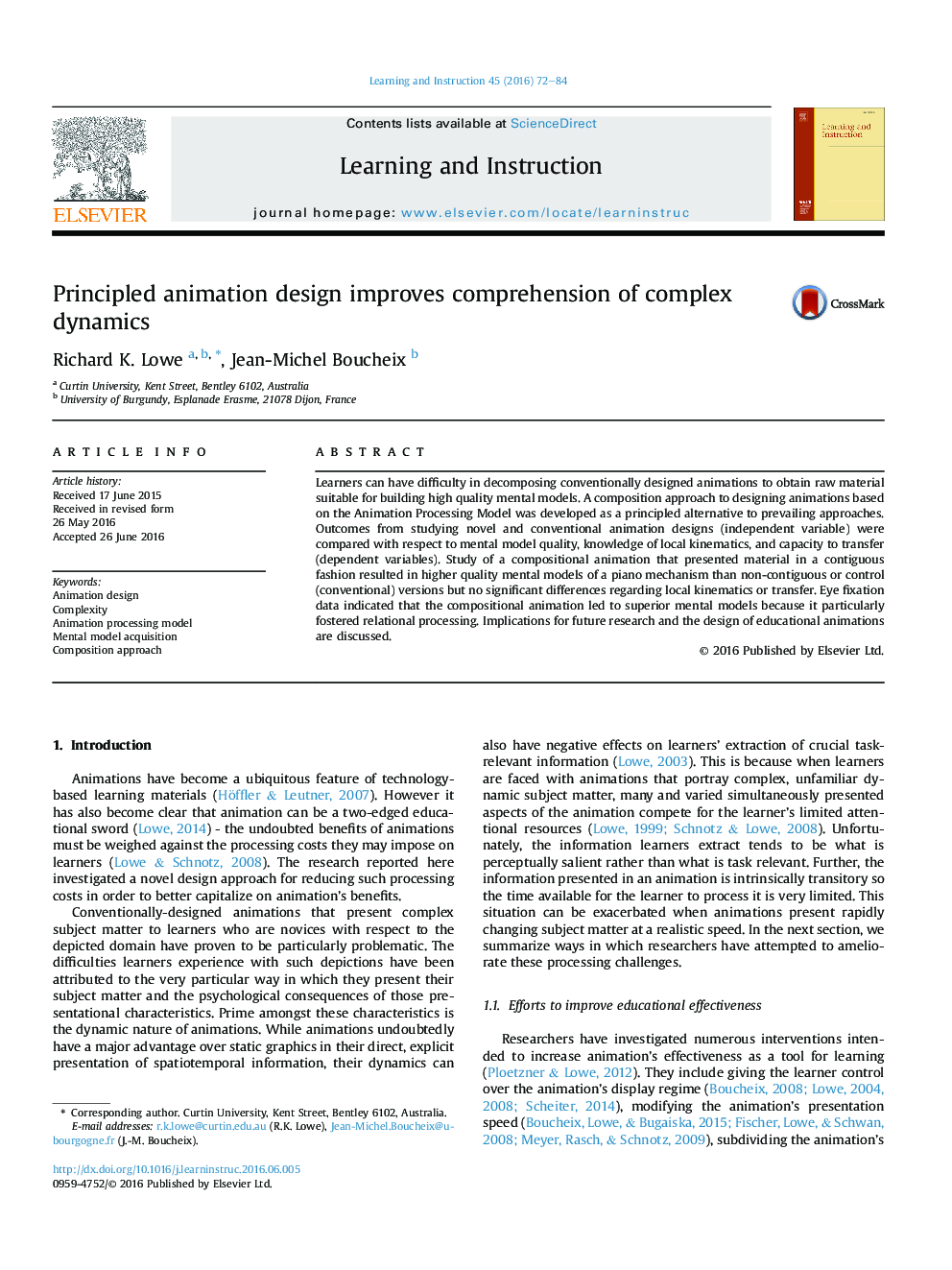| Article ID | Journal | Published Year | Pages | File Type |
|---|---|---|---|---|
| 365463 | Learning and Instruction | 2016 | 13 Pages |
•Conventionally-designed ‘comprehensive’ animations lack educational effectiveness.•The Animation Processing Model was used to devise an alternative design approach.•This approach is consistent with learners’ internal knowledge composition processes.•Animations designed with a composition approach resulted in superior mental models.•Eye-tracking data suggest that compositional design fosters relational processing.
Learners can have difficulty in decomposing conventionally designed animations to obtain raw material suitable for building high quality mental models. A composition approach to designing animations based on the Animation Processing Model was developed as a principled alternative to prevailing approaches. Outcomes from studying novel and conventional animation designs (independent variable) were compared with respect to mental model quality, knowledge of local kinematics, and capacity to transfer (dependent variables). Study of a compositional animation that presented material in a contiguous fashion resulted in higher quality mental models of a piano mechanism than non-contiguous or control (conventional) versions but no significant differences regarding local kinematics or transfer. Eye fixation data indicated that the compositional animation led to superior mental models because it particularly fostered relational processing. Implications for future research and the design of educational animations are discussed.
